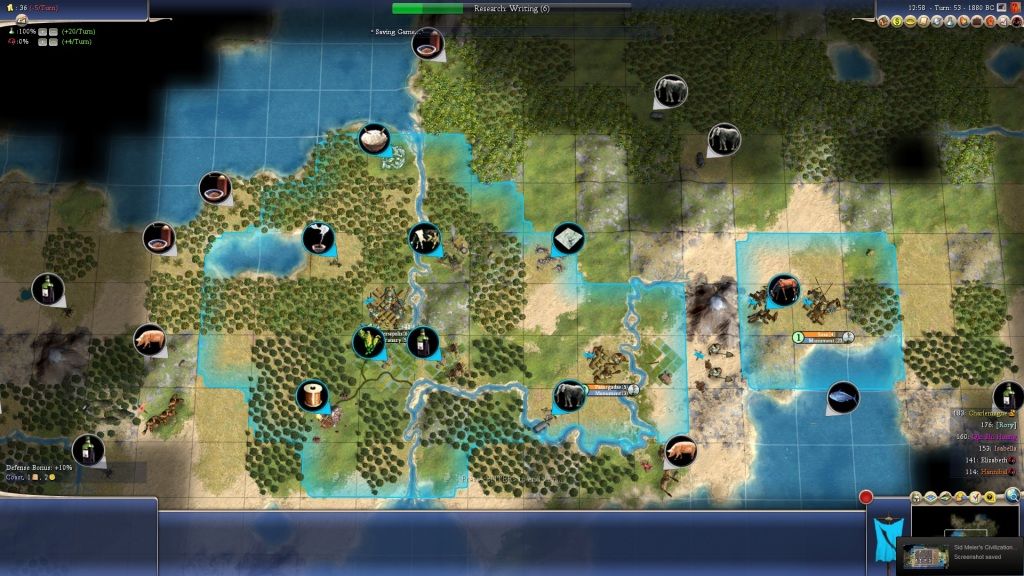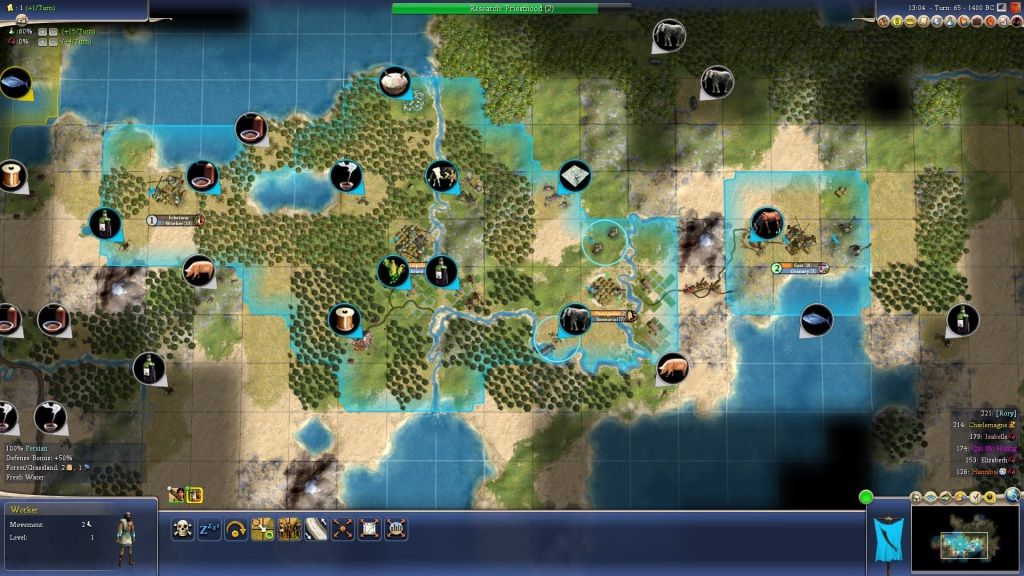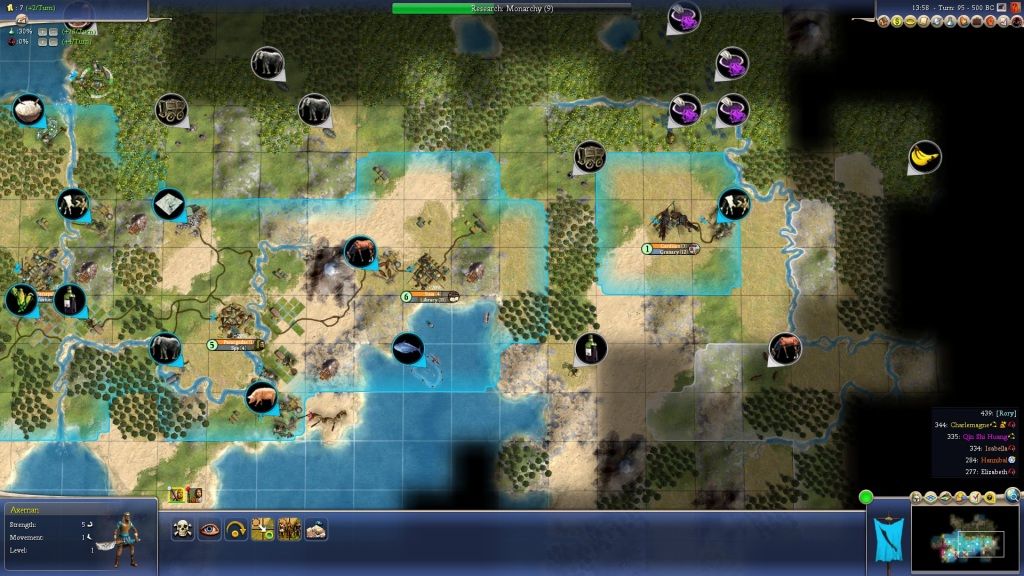Doesn't look too bad imo

There are some things that really worry me though:
I see 2 Workers on the Screen, for 4 cities, you should have 6 (1.5 / city rule of the thumb, sometimes one even needs more) .
This explains why so much land is not improved, why so many Forrests are still not chopped. Regarding your question what is good to chop: Everything (except Tundra or tiles having camp-ressources. Everything must be chopped, and everything should go into Workers / Settlers) .
You don't whip enough. Your Capital is size 8, but only has 4 improved tiles. Whip whenever a city grows on an unimproved tile, but more important, improve the tiles.
You're building Cottages on normal land while riverside-one would be available. Especially when playing a FIN like Darius on the Screen, this is of major importance.
Regarding your opening post:
Keep on playing Huge maps if you want, but adjust the game-speed. Huge / Normal is extremely unfavourable.
Chopping is the most important production increase in early game (just imagine you'd have chopped those forrests, you'd have 20 Immortals and 10 cities then) while whipping is always imporant and lasts longer (you can still run Slavery while being in modern times) .
Not being able to keep up in tech means you built too few Cottages.
Chop Settlers / Workers. And there is no number of turns you should save / whip, every whip has fixed value of 30 Hammers (normal gamespeed, Marathon i. e. has 90) per population point whipped. I once wrote a post about whipping, maybe you'll find it, I think it was in short: Whip when growing onto unimproved tiles, don't whip away good tiles, whip when something is needed badly (last rule overwrites the 2 previous ones) .
Important techs are: Food-techs first (look what ressources you got) , then production techs (Mining, Bronze Working) then Commerce techs (Fishing, Pottery) . After that, beeline Alpha on low lvls, on high lvls you'll be able to trade that.
Important techs after Alpha: Math (improves Hammers generated by chops) , Calendar (gives access to more ressources) , Currency (probably the most important tech of the game, gives extra Traderoutes and the ability to build gold) , Construction (Catapults) , Metalcasting (Forges) , Civil Service (Burocracy Civic makes your Capital awesome if you cottaged it) .
After that, beeline Liberalism, take Military Tradition from it and win the map with Cuirrassiers (most overpowered unit in the game) , but you have to come so far first

Regarding your 2nd post:
On lower difficulty and large maps, you don't have to rush, as you can peacfully settle the land because the AI is so slow. Military costs money, but the bigger your cities are, the less you have to pay. Improving the tiles and building Cottages has the biggest importancy, though there are other ways to get your economy going, like working hammer-tiles and building gold or building farms and working specialists (your Capital should always be cottaged though because of the power of Burocracy) .
And at last, concerning city specialization, take these rules of the thumbs and you'll do at least twice as good as you do now:
Build 1 GP Farm (Food-heaviest city, all Farms, work as many Specialists as you can while the city still grows) .
50% Hammer-cities (cities with enough Food can work mines and later Workshops, those cities build troops and should get Forges) .
50% Commerce-cities (cities with less Food, hopefully a river, those cities work Cottages, get Libraries, and later Banks) .
Most imporant: Don't build everything everywhere. A Granary is the only building needed for winning!
Cya, Sera


 . I've been lurking for a bit
. I've been lurking for a bit


 out of your hammers before Currency. This is a moderately advanced strategy, I would suggest you only try it if you find yourself with adequate military but an empty coin purse.
out of your hammers before Currency. This is a moderately advanced strategy, I would suggest you only try it if you find yourself with adequate military but an empty coin purse.  surplus, and cottages on grass will be food neutral (no net gain or loss), so you can work cottages without slowing your growth. Plains tiles by contrast give only 1
surplus, and cottages on grass will be food neutral (no net gain or loss), so you can work cottages without slowing your growth. Plains tiles by contrast give only 1  and are therefore better suited to production. If you allow forests to remain standing on these tiles the base yield improves by 1
and are therefore better suited to production. If you allow forests to remain standing on these tiles the base yield improves by 1 










